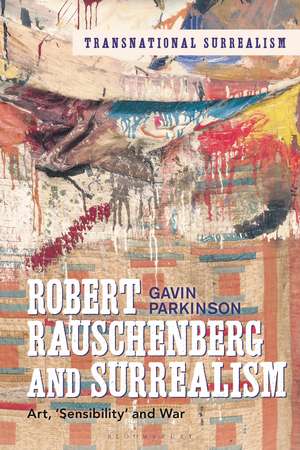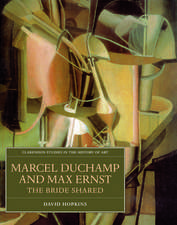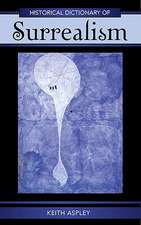Robert Rauschenberg and Surrealism: Art, 'Sensibility' and War: Transnational Surrealism
Autor Dr Gavin Parkinsonen Limba Engleză Hardback – 19 apr 2023
Preț: 544.48 lei
Preț vechi: 776.44 lei
-30% Nou
Puncte Express: 817
Preț estimativ în valută:
104.20€ • 108.38$ • 86.02£
104.20€ • 108.38$ • 86.02£
Carte disponibilă
Livrare economică 24 martie-07 aprilie
Preluare comenzi: 021 569.72.76
Specificații
ISBN-13: 9781501358296
ISBN-10: 1501358294
Pagini: 320
Ilustrații: 15 colour & 56 bw illus
Dimensiuni: 152 x 229 x 25 mm
Greutate: 0.77 kg
Editura: Bloomsbury Publishing
Colecția Bloomsbury Visual Arts
Seria Transnational Surrealism
Locul publicării:New York, United States
ISBN-10: 1501358294
Pagini: 320
Ilustrații: 15 colour & 56 bw illus
Dimensiuni: 152 x 229 x 25 mm
Greutate: 0.77 kg
Editura: Bloomsbury Publishing
Colecția Bloomsbury Visual Arts
Seria Transnational Surrealism
Locul publicării:New York, United States
Caracteristici
The first work of art history to place Rauschenberg and Surrealism in the theory of the 1960s in France
Notă biografică
Gavin Parkinson is Professor of European Modernism, The Courtauld Institute of Art, UK.
Cuprins
Introduction1. Poet: Allegory and Metaphor in US Art History and Criticism2. In the Surrealist Domain: Bed and Target with Plaster Casts3. Opposer: The Poetics and Politics of Canyon in Paris and New York, 19614. Surrealist of the Re-Found Object: Monogram in Front unique5. Resistance Artist: Bed at Anti-Procès6. The Constantin Guys of the Atomic Era: Alain Jouffroy, Talisman and Barge7. Choisiste: 'Things' in French and US Art Criticism in the 1960s8. Surrealist in Irony: José Pierre and Trophy III (for Jean Tinguely)Concluding Remarks: On Robert Rauschenberg, Surrealism and Art History
Recenzii
Parkinson's expansive study opens up poetic, allusive, and sometimes political layers in Rauschenberg 's works, unearthing important responses from Parisian critics and writers. This approach unexpectedly establishes Rauschenberg's Surrealist inflected roots, whilst contributing to the recent wave of expanded consideration of post-war, later Surrealism.
With remarkable precision, thoroughness, and generative energy, Parkinson's book offers an authoritative account of the French surrealist reception of Rauschenberg's work in the 1960s. Analysing little-known and untranslated texts, Parkinson shows just how enmeshed the aesthetic and political registers were for these writers and artists.
This impressive book is more than a study on Rauschenberg and Surrealism, more specifically on the largely unnoticed or forgotten link between them. It is also a reflection on the way we write art history today, as a strange mix of theory, thoroughly documented archival research and, above all, an obsession with linear periodization.
With remarkable precision, thoroughness, and generative energy, Parkinson's book offers an authoritative account of the French surrealist reception of Rauschenberg's work in the 1960s. Analysing little-known and untranslated texts, Parkinson shows just how enmeshed the aesthetic and political registers were for these writers and artists.
This impressive book is more than a study on Rauschenberg and Surrealism, more specifically on the largely unnoticed or forgotten link between them. It is also a reflection on the way we write art history today, as a strange mix of theory, thoroughly documented archival research and, above all, an obsession with linear periodization.




















![This Is Dali: 23 Stylish Outfits from Six Simple Patterns [With Pattern(s)]](https://i4.books-express.ro/bt/9781780671093/this-is-dali.jpg)
